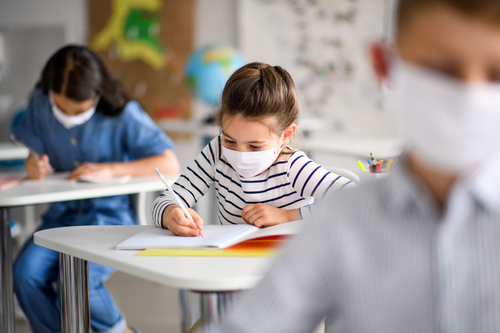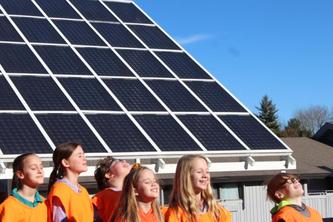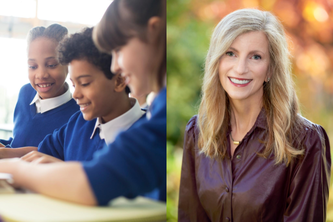U of M survey: PK-12 students, families and educators agree learning occurred, but more mental health resources are needed

Minnesota educators, families and students agree that PK-12 students learned during the first half of the 2020-21 school year, according to a University of Minnesota analysis of the new Minnesota Safe Learning Survey. However, the extent of how much coursework was learned was perceived to be lower than pre-pandemic times, but higher than spring of 2020.
The statewide survey of 23,000 educators, families and students was conducted in February 2021 by the Wisconsin-Minnesota Comprehensive Center (WMCC) in the University’s College of Education and Human Development for the Minnesota Department of Education (MDE). The survey’s goal is to provide a broad picture of how those most impacted by the state’s Safe Learning Plan are experiencing it. It is a follow-up to the University’s Spring 2020 Minnesota PK-12 Distance Learning Survey, which was conducted after all PK-12 students began learning from home in March 2020.
“There’s no doubt that these past 13 months have been a challenge for students, educators and their families,” said Katie Pekel, the principal in residence at the University of Minnesota. “However, through this work, we’ve learned where progress is being made and where challenges still remain. This data will provide valuable insight to inform decision-making across our state as communities continue to navigate learning, engagement and well-being during the pandemic.”
Fall learning
Between August 2020 and January 2021, the six months leading up to the survey, school districts across the state moved in and out of different learning modes (e.g., distance, hybrid, in-person) depending on the number of COVID-19 cases in their community and schools.
What researchers found is that all three groups surveyed — students, educators and families — felt that learning did occur in the fall of 2020. More specifically, the survey shows:
- educators felt that there was more academic learning, rather than social emotional learning, happening in the fall when compared to the previous spring;
- families reported they felt higher rates of learning occurred for students in early childhood education programs and elementary schools than those in secondary schools; and
- students in grades 6-12 reported they felt they were learning at higher rates than the families of students in those grades.
Successes and challenges
Researchers’ analysis of the responses shows that technology support — which was among the biggest challenges named in the Spring 2020 Minnesota PK-12 Distance Learning Survey — was actually one of last fall's biggest successes.
“No matter if they were students, educators or families, technology support was reported to be among the least significant challenges,” said Kim Gibbons, director of the University’s Center for Applied Research and Educational Improvement and co-director of the WMCC. “That is a remarkable turnaround from last spring, when it was a major concern among all groups. Funding for additional devices from the federal government, the quick adaptation of technology, and the increased communication about technology supports all contributed to this rapid shift.”
Also among the top successes for last fall, according to the survey's findings, were the efforts to ensure health and safety, which researchers say may relate to the varied and shifting modes of learning across the state that was addressed in the initial design of MDE’s Safe Learning Plan.
However, researchers found persistent challenges remain: engaging disengaged students, supporting students’ needs in the home, and supporting the mental health needs of students, families and educators. Overall, the findings include:
- Educators in all roles agreed that the mental health of students and staff was among the top challenges last fall, with administrators saying student and staff mental health was their number one challenge.
- For teachers and support professionals, mental health support for students and families was the third greatest need. This was behind challenges with their own workload, as well as support of engaging disengaged students.
- Students reported that getting help with their mental health was also their third greatest challenge, with understanding what they are learning and keeping up with schoolwork as the top challenges overall.
“The challenges that teachers, support professionals and students report as their biggest concerns can also affect overall mental health,” said Pekel. “The stress over workload or keeping up with schoolwork — not to mention the effects of other pandemic-related circumstances and racial injustices — can negatively affect a person’s overall well-being. More supports, such as increased school counselor or social worker staffing to support student mental health and ongoing professional development supports for educators, are needed to help everyone better navigate these challenging times together.”
Read the full Minnesota Safe Learning Survey report. The survey will be distributed to districts across Minnesota two additional times: May 2021 and October 2021.
- Categories:
- Education





